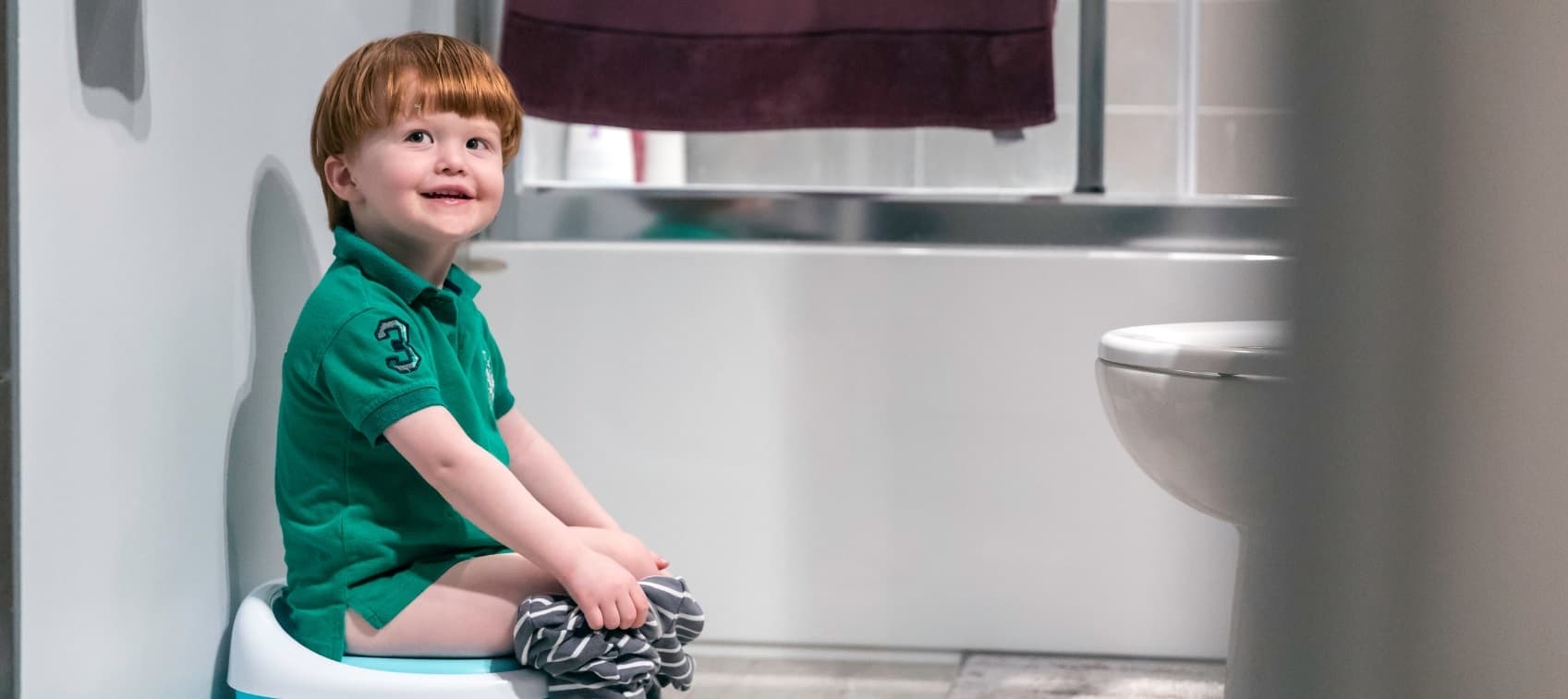
Constipation is a common complaint that can make kids and their parents miserable. In fact, constipation affects up to 30% of children—toddlers and preschool-age children being the largest age group. Thankfully constipation in children is usually easy to treat and prevent with a few lifestyle changes.
Know the Signs of Constipation in Kids
- Infrequent bowel movements (BM)—a day or more between BMs
- Hard, small feces
- Difficult or painful passage of large stool
- Fecal incontinence (either voluntary or involuntary elimination of stool into the underwear)
Fecal incontinence sounds like the opposite of constipation, but children with fecal incontinence often have underlying constipation, so keep this on your radar.
Chronic constipation can also be an underlying factor for urinary incontinence. If your child is older and is still struggling to stay dry, constipation is something worth investigating with their doctor.
Causes of Constipation
There are a number of factors that can contribute to constipation, including:
- Dietary changes
- Painful BM experience
- Psychosocial stressor
- Stool-withholding behavior
How Often Should My Child Have a Bowel Movement?
In my practice, during the preschool years, I like to see a child have one to two well-formed, easy-to-pass bowel movements per day. If your child is going days without a bowel movement or if the stool is hard to pass or uncomfortable, we dive deeper to identify the cause and add natural supportive treatments.
Should I Call the Doctor?
Any time there is a change in your child’s bowel health, it is important to speak to their doctor to make sure a more serious underlying cause doesn’t need to be ruled out.
Natural Constipation Remedies for Kids
Here are some natural strategies to consider if your child is experiencing intermittent or chronic constipation and severe underlying causes have been ruled out by their doctor.
1. Keep hydrated
Drinking lots of water is important to facilitate a healthy bowel movement. I encourage parents to make sure their child has an easily accessible water bottle at all times. I do not encourage juice for children for many reasons, one being that it’s dehydrating and takes away from their daily water count.
The amount of water your child drinks daily may need to be increased based on their diet. This happened with both of our boys when we introduced sweet potatoes. They devoured a lot in one sitting so we had to increase their water consumption to prevent imbalance.
2. Diet matters
Fiber helps build roughage in the stool to facilitate movement through the intestines, feeds the good bacteria in your gut, and attracts water into the colon to lubricate and ease the passage of stool. One of the best ways to get hydrating fiber is through plenty of fresh fruits and vegetables. A good rule of thumb is half of your child’s plate should consist of fruits and/or veggies. Whole grains and beans also provide good fiber. Crackers and other processed carbohydrates are lower in fiber and can contribute to constipation.
Dairy can be a constipating food because of its high casein protein content. This is especially common in toddlers who are picky eaters, constantly asking for bread, crackers, milk, and cheese. A 4-week trial of removing dairy from the diet can help identify if this is a contributing factor for your child.
Other common food sensitivities to consider include gluten, corn, egg, and soy. If you suspect one of these foods is the culprit, keeping a diet diary that includes your child’s bowel frequency and speaking with your child’s doctor about an elimination diet can be helpful next steps.
3. Get moving
Exercise helps stimulate intestinal contractions and bowel movements. Ride bikes with your child, run in the yard, dance—any type of physical activity helps the bowels to work well.
4. Abdominal massage
Massaging the belly with oil in a gentle clockwise motion can help encourage passage through the colon. I really like castor oil (use a small amount and be careful as it can stain fabrics) or a mild oil like sesame, almond, or avocado. Coconut oil works, too.
5. Toilet sitting
Encourage your child to sit on the toilet regularly, at least once a day, preferably in the morning upon rising or right after breakfast. Regular sittings shortly after a meal, for five to ten minutes two to three times a day, can also be helpful. This helps teach your child regular bathroom habits.
6. Positive reward system
Your child may push back, so it can be helpful to implement a reward system to encourage toilet-sitting behavior. Always positively reward effort (toilet sitting) rather than success (evacuation on the toilet) and ensure there is no punishment for accidents.
Rewards can include stickers, activities, or anything you know your child will enjoy. I encourage implementing whatever you need to help your child to relax and welcome this time as much as possible—thumb sucking, soothers, or watching a show. If it minimizes the battle and helps them relax, go for it!
I made up a song when our oldest was toilet training, and my boys still ask for it if they need some BM moral support! You can make up your own or borrow this one. It’s to the tune of "Let It Go" from the movie Frozen (pun intended).
Let it go, let it go, let the poop drop into the toilet
You don’t have to push, just let it come when it’s ready
It’s okay if it takes all-day
Let the poop come out
Then we will flush it away
Usually, I stop and my kids sing the last verse and then they get to flush the toilet.
7. Toilet ergonomics
I recommend adding a child toilet seat insert to your regular toilet so your child can relax and feel secure while sitting. Don’t forget a stool for foot support. Using a potty naturally elevates the knees above the hips, which helps to relax the pelvic floor.
What to Give Your Kids for Constipation
- Probiotics: In addition to supporting a healthy microbiome, bifidobacterium and lactobacillus produce lactic acid that lowers the pH and enhances peristalsis and reduces transit time through the colon. I love the gentle, safe, and multifaceted benefits of probiotics for my pediatric patient population.
- Herbal teas: A wonderful hydrating way to introduce herbs that can help support your child’s digestive tract. Ginger is a warming herb that can help to stimulate peristalsis. Chamomile is gentle, slightly bitter, and helps ease tummy troubles. Fennel is sweet and helps to reduce gas. Lemon balm supports digestion and helps calm the nervous system, which is especially beneficial if part of the challenge is stress or anxiety around a bowel movement. You can put these herbal teas in your child’s water bottle at room temperature.
- Laxative: Magnesium is an essential mineral that also has a laxative effect. Powdered magnesium citrate is great to mix with warm water. Choose the dose recommended on the container for your child’s age and gradually increase the dose until you see a benefit. It can be given at night before bed to help encourage a morning bowel movement.
RESOURCES:


